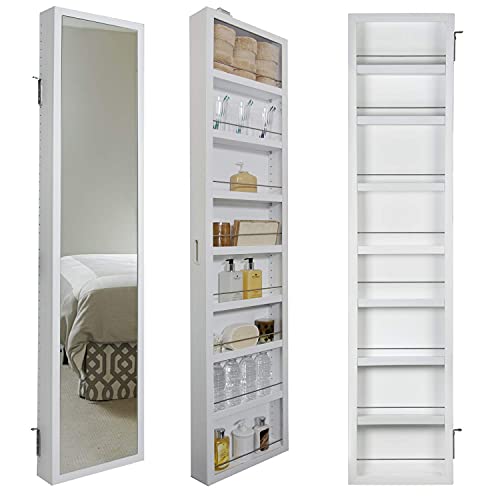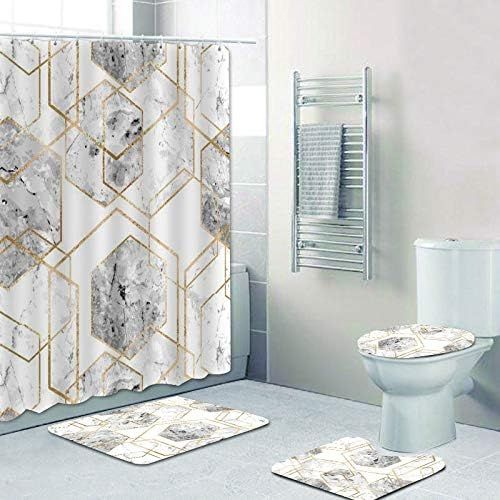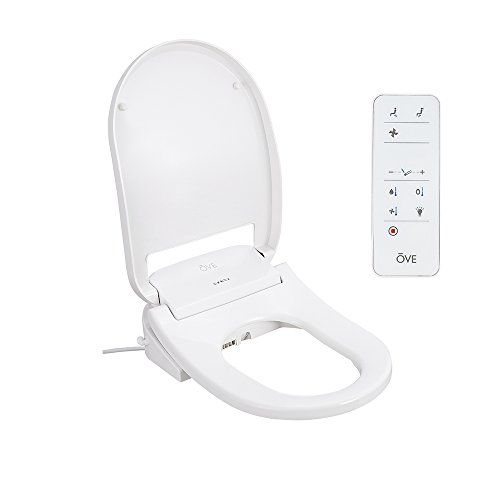Does Bathroom Vanity Need To Be Attached To Wall
Are you in the midst of a bathroom renovation and wondering if your new vanity needs to be attached to the wall? Well, you’ve come to the right place!
In this article, we’ll explore the various factors that come into play when deciding whether your bathroom vanity should be attached to the wall or not. From stability and durability to space and functionality, we’ll cover it all. We’ll also delve into the importance of proper installation and maintenance, as well as the aesthetic appeal and plumbing considerations involved.
Additionally, we’ll discuss the flexibility and versatility of different mounting options, and how they can fit into your budget. Whether you’re considering a DIY approach or seeking professional assistance, we’ll help you make an informed decision based on your personal preferences.
So, let’s dive in and find out if your bathroom vanity needs to be securely attached to the wall!
Key Takeaways
- Attaching a bathroom vanity to the wall provides stability, durability, and prevents wobbling or tipping.
- Wall-mounted vanities require plumbing adjustments and professional installation, while freestanding vanities work with existing plumbing and can be easily moved or replaced.
- Wall-mounted vanities maximize floor space, create an open feel, and offer adjustable heights, while freestanding vanities offer design versatility and come in various styles and sizes.
- The choice between DIY or professional installation depends on skills, preferences, and the desired level of personalization for the bathroom renovation.
Stability and Durability
You’ll be happy to know that bathroom vanities don’t need to be attached to the wall, but it’s definitely a good idea for added stability and durability.
While it is possible to have a freestanding vanity, stability concerns and durability factors should be taken into consideration. Attaching the vanity to the wall helps prevent any wobbling or tipping, especially if you have kids or pets in the house.
It also ensures that the vanity remains in place, even when the drawers and doors are repeatedly opened and closed. Additionally, attaching the vanity to the wall helps distribute the weight evenly, reducing the strain on the legs and frame. This can significantly increase the lifespan of the vanity and prevent any potential damage, ensuring it lasts for years to come.
Space and Functionality
To optimize space and enhance functionality, it’s important to secure the bathroom vanity firmly against a sturdy surface. By attaching it to the wall, you create a stable foundation and prevent any wobbling or movement. This is especially crucial in smaller bathrooms where every inch of space matters. Not only does a securely attached vanity provide stability, but it also allows for better space optimization and storage solutions. By utilizing the wall space above and below the vanity, you can incorporate shelves, cabinets, or even towel racks to maximize storage. This helps declutter the bathroom and keeps essential items organized and easily accessible. Additionally, attaching the vanity to the wall ensures that it stays in place, even during daily use, providing a durable and long-lasting solution for your bathroom needs.
| Space Optimization | Storage Solutions |
|---|---|
| Utilize wall space for shelves and cabinets | Incorporate towel racks below vanity |
| Create a clutter-free environment | Maximize storage for essential items |
Installation and Maintenance
Securing the bathroom vanity firmly against a sturdy surface is crucial for its installation and long-term maintenance. When it comes to installation techniques, it’s recommended to use wall anchors or brackets to attach the vanity securely to the wall. This will ensure stability and prevent any accidents or damage.
Make sure to follow the manufacturer’s instructions and use the appropriate tools for the job. Additionally, it’s important to regularly check and tighten any screws or bolts that may become loose over time.
When it comes to maintenance, it’s important to clean the vanity regularly using mild soap and water, avoiding harsh chemicals that can damage the finish. Regularly inspect the vanity for any signs of wear or damage and address them promptly to prevent further issues.
Following these installation techniques and maintenance tips will help prolong the lifespan of your bathroom vanity.
Aesthetic Appeal
Make sure your bathroom vanity isn’t just functional, but also visually appealing. The style of your vanity can greatly impact the overall aesthetic of your bathroom. Consider these vanity style options to enhance the look of your space:
-
Traditional: This classic style features ornate details, elegant finishes, and decorative hardware. It adds a touch of sophistication and timeless charm to your bathroom.
-
Modern: Sleek lines, minimalist design, and a streamlined appearance characterize this style. It creates a contemporary and chic atmosphere in your bathroom.
-
Rustic: If you prefer a cozy and warm feel, a rustic vanity is the way to go. Featuring natural materials like wood and distressed finishes, it adds a charming and inviting touch to your bathroom.
When it comes to countertop options, there’s a wide range to choose from. Consider materials like marble, quartz, granite, or even concrete, depending on your desired look and budget. These countertop options can enhance the overall style and visual appeal of your bathroom vanity.
Plumbing Considerations
When considering plumbing considerations for bathroom vanities, it’s important to note that wall-mounted vanities often require relocating plumbing. This means that you may need to invest additional time and effort into adjusting the plumbing to accommodate the vanity.
On the other hand, freestanding vanities can work with existing plumbing, which saves you the hassle and cost of making adjustments.
It’s crucial to consider these factors and weigh the cost and effort of plumbing adjustments before making a decision on your bathroom vanity.
Wall-mounted vanities require relocating plumbing
To properly install a wall-mounted vanity, you’ll need to consider the task of relocating the plumbing, which can add complexity and require professional expertise. When you opt for a wall-mounted vanity, it means that the plumbing connections will need to be adjusted to fit behind the vanity and within the wall. This involves rerouting the water supply lines and drain pipes to align with the new location. A licensed plumber can handle this task efficiently, ensuring that the plumbing connections are properly adjusted and sealed. Here is a table that highlights some key considerations when relocating the plumbing for a wall-mounted vanity:
| Plumbing Considerations |
|---|
| Determine new plumbing location |
| Reroute water supply lines |
| Adjust drain pipes |
| Ensure proper sealing |
| Test for leaks |
Relocating the plumbing for a wall-mounted vanity is not a DIY-friendly task and should be left to professionals who have the necessary skills and experience to ensure a successful installation.
Freestanding vanities can work with existing plumbing
If you’re looking to avoid the hassle of relocating plumbing, then a freestanding vanity may be the perfect choice for you. Unlike wall-mounted vanities, freestanding options can work with your existing plumbing. This means you won’t have to deal with the time-consuming and costly task of rerouting pipes.
A freestanding vanity is designed to sit directly on the floor, with no need for attachment to the wall. This not only makes installation easier but also gives you the flexibility to position the vanity wherever you desire in your bathroom.
With freestanding vanities, you can choose from a wide range of styles and designs to suit your personal taste. Whether you prefer a modern, sleek look or a more traditional aesthetic, there is a freestanding vanity out there that will fit your needs.
So, say goodbye to the hassle of relocating plumbing and hello to the convenience and versatility of a freestanding vanity.
Consider the cost and effort of plumbing adjustments
Installing a freestanding vanity can save you time and money by eliminating the need for costly plumbing adjustments. With a freestanding vanity, you don’t have to worry about relocating plumbing lines or making major modifications to your bathroom walls. This means you can avoid the additional expenses associated with hiring a professional plumber or purchasing new plumbing fixtures.
When considering the cost and effort of plumbing adjustments, here are three key factors to keep in mind:
-
Existing Plumbing: A freestanding vanity can be easily connected to your existing plumbing lines, reducing the need for extensive modifications.
-
Flexibility: Freestanding vanities offer flexibility in terms of placement, allowing you to position them wherever it’s most convenient for you.
-
DIY Installation: Since freestanding vanities aren’t attached to the wall, they’re generally easier to install yourself, saving you both time and money.
By opting for a freestanding vanity, you can enjoy a hassle-free installation process while also keeping your plumbing costs and installation effort to a minimum.
Flexibility and Versatility
When considering bathroom vanities, it’s important to think about the flexibility and versatility they offer.
Wall-mounted vanities can be adjusted to different heights, allowing you to customize it to your specific needs.
On the other hand, freestanding vanities provide the advantage of being easily moved or replaced, giving you the freedom to change up your bathroom layout whenever you want.
As you make your decision, it’s crucial to consider your long-term plans for the bathroom and how these vanities fit into those plans.
Wall-mounted vanities can be adjusted for different heights
Wall-mounted vanities can be easily adjusted to accommodate different heights, making them a convenient and flexible option for any bathroom. This feature allows you to customize the vanity according to your specific needs, ensuring optimal comfort and functionality. Here are three reasons why adjustable height wall-mounted vanities are a great choice:
-
Space-saving: Wall-mounted vanities provide a clever solution for smaller bathrooms, as they maximize floor space and create a more open and airy feel.
-
Ergonomic design: By being able to adjust the height of the vanity, you can ensure that it’s at a comfortable level for everyone in your household, regardless of their height or physical abilities.
-
Versatile installation: Wall-mounted vanities can be installed at any desired height, allowing you to customize the placement to suit your personal preferences and needs.
Overall, the adjustable height feature of wall-mounted vanities offers both practicality and versatility, making them a smart choice for any bathroom.
Freestanding vanities can be easily moved or replaced
One advantage of freestanding vanities is that they can easily be relocated or swapped out, giving you the freedom to change up your bathroom’s style whenever you want. This mobility advantage is particularly beneficial if you enjoy updating your bathroom’s look or if you plan on moving to a new home in the future.
With a freestanding vanity, you don’t have to worry about damaging the wall or dealing with complex installation processes. Additionally, freestanding vanities offer design versatility. They come in a wide range of styles, sizes, and materials, allowing you to find the perfect fit for your bathroom’s aesthetic.
Whether you prefer a modern, minimalist look or a more traditional design, there are freestanding vanities available to suit your taste and enhance the overall ambiance of your bathroom.
Consider your long-term plans for the bathroom
If you’re thinking about your long-term plans for the space, it’s important to consider how a freestanding vanity can provide flexibility and ease of customization. Unlike wall-mounted vanities, which require installation and can be difficult to remove or replace, freestanding vanities offer the convenience of being easily movable.
Here are four reasons why considering a freestanding vanity for your bathroom can be a smart choice:
-
Flexibility: With a freestanding vanity, you have the freedom to rearrange your bathroom layout without the hassle of uninstalling and reinstalling fixtures.
-
Customization: Freestanding vanities come in a wide variety of styles, sizes, and finishes, allowing you to find the perfect fit for your bathroom decor.
-
Future-proofing: By choosing a freestanding vanity, you can future-proof your bathroom by easily updating or replacing it as your design preferences change over time.
-
Accessibility: Freestanding vanities can be adjusted to accommodate different heights, making them suitable for people of all ages and abilities.
Consider these advantages when planning for the long term and ensure that your bathroom remains adaptable and personalized to your evolving needs and style preferences.
Cost and Budget
When considering the cost and budget for your bathroom renovation, it’s important to take into account the type of vanity you choose.
Wall-mounted vanities tend to be more expensive due to the additional installation required, while freestanding vanities can be a more affordable option.
It’s crucial to consider your budget and priorities before making a decision, as this will help you determine the best vanity option for your needs.
Wall-mounted vanities may be more expensive
Wall-mounted vanities can be pricier, but the sleek and modern look they bring to your bathroom is definitely worth the investment. When it comes to cost comparison, wall-mounted vanities generally tend to be more expensive than freestanding ones. This is because they require additional materials and hardware for installation, such as brackets and anchors, which can add to the overall cost.
However, the benefits of a wall-mounted vanity go beyond just aesthetics. They can help optimize space in your bathroom by freeing up valuable floor space, making the room feel more open and spacious. This is especially important in smaller bathrooms where every inch counts.
So, while they may be more expensive upfront, the long-term benefits of a wall-mounted vanity make it a worthwhile investment for any bathroom renovation project.
Freestanding vanities can be more affordable
Moving on to the current subtopic, let’s talk about freestanding vanities and why they can be a more affordable option for your bathroom. If you’re looking to save some money on your bathroom renovation, a freestanding vanity might be the way to go.
One of the advantages of freestanding vanities is their design flexibility. They come in a wide range of styles, sizes, and finishes, allowing you to find the perfect fit for your bathroom decor.
Here are a few reasons why freestanding vanities can be more affordable:
- They don’t require professional installation, saving you on labor costs.
- They can be easily moved or replaced without damaging the wall, making them a cost-effective long-term investment.
- They often come with built-in storage options, eliminating the need for additional cabinets or shelves.
With these affordable options and design flexibility, freestanding vanities are a practical choice for anyone looking to update their bathroom without breaking the bank.
Consider your budget and priorities for the renovation
To make the most of your bathroom renovation budget, it’s important to consider your priorities and financial constraints. When it comes to choosing a bathroom vanity, there are a few budget considerations to keep in mind. First, determine how much you’re willing to spend on the vanity itself. Freestanding vanities can be a more affordable option compared to built-in ones, as they don’t require additional installation costs. Additionally, think about what aspects of the renovation are most important to you. Are you looking to update the overall look of your bathroom or prioritize functionality? By prioritizing your renovation goals, you can allocate your budget accordingly. Consider creating a budget breakdown table like the one below to help you stay organized and make informed decisions during your bathroom renovation.
| Category | Estimated Cost |
|---|---|
| Vanity | $500 |
| Sink and Faucet | $300 |
| Lighting Fixtures | $200 |
| Countertop | $400 |
| Installation | $500 |
By carefully considering your budget and renovation priorities, you can create a bathroom space that meets your needs without breaking the bank.
DIY vs. Professional Installation
When it comes to installing a wall-mounted vanity, it’s best to leave it to the professionals. This type of installation requires expertise in ensuring proper placement and anchoring to the wall.
On the other hand, if you’re considering a freestanding vanity, it can be a DIY project that you can tackle yourself. Just make sure to assess your skills and willingness to take on the installation before diving in.
Wall-mounted vanities require professional expertise
Installing a wall-mounted vanity requires professional expertise, as you’ll need their skills to ensure it’s securely attached and properly aligned.
Wall-mounted vanities offer a sleek and modern look to your bathroom, but their stability and durability depend on proper installation. Professionals have the knowledge and experience to securely attach the vanity to the wall, ensuring it can support the weight and withstand daily use.
They will also take into consideration the plumbing aspects, making sure the vanity is properly connected to the water supply and drain pipes. This ensures that there are no leaks or water damage in the future.
Trusting a professional for this installation will give you peace of mind, knowing that your wall-mounted vanity is securely and safely installed, providing both functionality and style to your bathroom.
Freestanding vanities can be installed by DIYers
You can easily install a freestanding vanity by yourself and add a touch of personal style to your bathroom. Unlike wall-mounted vanities that require professional expertise, freestanding vanities offer a more DIY-friendly installation process.
One of the main advantages is that you don’t need to worry about attaching it to the wall, making it a convenient option for those who prefer a hassle-free installation.
When it comes to installation challenges, freestanding vanities generally require less effort and technical skill compared to their wall-mounted counterparts. However, it’s important to ensure that the floor is level and sturdy enough to support the weight of the vanity.
Furthermore, freestanding vanities come in a variety of material options, including wood, marble, and glass, allowing you to choose the one that best suits your personal taste and bathroom decor. Whether you prefer a rustic wooden vanity or a sleek modern design, there is a wide range of options available to match your style and preferences.
Consider your skills and willingness to tackle the installation
If you’re considering installing a freestanding vanity, take into account your own skills and willingness to take on the project. A thorough skills assessment is crucial in determining whether you have the necessary expertise to successfully complete the installation.
While installing a freestanding vanity may seem like a manageable DIY task, it’s important to understand the installation challenges you may encounter. One major challenge is ensuring the vanity is level and securely anchored to the floor. This requires precise measurements, accurate leveling, and careful consideration of the type of flooring you have.
Additionally, plumbing connections need to be properly installed to ensure efficient and leak-free operation.
If you’re confident in your skills and willing to tackle these challenges, installing a freestanding vanity can be a rewarding project. However, if you’re unsure or inexperienced, it may be best to seek the assistance of a professional to ensure a successful installation.
Personal Preference
When it comes to deciding whether to DIY or hire a professional for your bathroom vanity installation, it’s important to evaluate your own preferences and needs.
Consider your lifestyle and daily routine – if you have the time, skills, and desire to tackle the project yourself, then DIY may be the way to go.
However, if you prefer a hassle-free, professionally done job or if you have a busy schedule that leaves little time for DIY projects, hiring a professional might be the better option.
Ultimately, choose the option that aligns with your vision for the bathroom renovation and will give you the results you desire.
Evaluate your own preferences and needs
Imagine having a bathroom vanity that perfectly caters to your preferences and needs, allowing you to create a personalized space without the hassle of attaching it to the wall. Here are three reasons why evaluating your own preferences and needs is essential when deciding if your bathroom vanity needs to be attached to the wall:
-
Cost vs. Quality: By evaluating your own budget and desired quality, you can determine if a freestanding vanity suits your needs better. Freestanding vanities often come in a wide range of prices, allowing you to find one that fits your budget without compromising on quality.
-
Size vs. Style: If you have a small bathroom or limited space, attaching your vanity to the wall may be the best option. However, if you prioritize style and want a unique, standalone piece, a freestanding vanity can add a touch of elegance and individuality to your bathroom.
-
Flexibility: Freestanding vanities offer the flexibility to rearrange your bathroom layout without the need for major renovations. This allows you to adapt your space as your needs change or if you decide to refresh the overall design of your bathroom.
Considering these factors will help you make an informed decision about whether or not your bathroom vanity needs to be attached to the wall.
Consider your lifestyle and daily routine
Take a moment to reflect on your busy lifestyle and daily routine – envision a bathroom vanity that seamlessly accommodates your needs, making your morning routine a breeze. When considering whether your bathroom vanity needs to be attached to the wall, it is important to evaluate how your lifestyle and daily routine may impact your decision. Do you have a large family sharing the bathroom? Are you constantly rushing in the mornings? These factors can influence whether a wall-mounted or freestanding vanity is more suitable for you.
To help you make an informed decision, let’s compare the advantages of each option in a table:
| Wall-Mounted Vanity | Freestanding Vanity |
|---|---|
| Space-saving | Versatile |
| Modern look | Easy to install |
| Easy to clean | More storage space |
| Customizable height | Easier to move |
Consider how these features align with your daily routine and lifestyle. A wall-mounted vanity may be ideal if you have limited space or prefer a sleek and modern look. On the other hand, a freestanding vanity offers more flexibility in terms of installation and mobility. Ultimately, the choice between a wall-mounted or freestanding vanity depends on your specific needs and preferences.
Ultimately, choose the option that aligns with your vision for the bathroom renovation
Ultimately, go with the option that best matches your desired vision for the renovation of your bathroom. When considering whether or not to attach your bathroom vanity to the wall, there are a few factors to keep in mind.
First and foremost, cost effectiveness plays a significant role. If you’re on a tight budget, a freestanding vanity might be a more affordable option as it eliminates the need for wall mounting hardware.
Secondly, space optimization is crucial, especially if you have a small bathroom. Wall-mounted vanities can create the illusion of a larger space by freeing up floor area.
Additionally, a wall-mounted vanity allows for easier cleaning as there are no legs or baseboards to navigate around.
Lastly, a floating vanity can add a modern and sleek aesthetic to your bathroom, giving it a minimalist and contemporary vibe. Consider these factors when making your decision.
- Cost effectiveness: Freestanding vanities are typically cheaper than wall-mounted ones.
- Space optimization: Wall-mounted vanities maximize floor space, making your bathroom appear larger.
- Easier cleaning: With no legs or baseboards, a wall-mounted vanity is easier to clean and maintain.
- Modern aesthetic: Floating vanities can give your bathroom a modern and sleek look.
- Versatility: Wall-mounted vanities can be easily adjusted to accommodate different heights and preferences.
Frequently Asked Questions
Can a bathroom vanity be used without attaching it to the wall?
Yes, a bathroom vanity can be used without attaching it to the wall. An alternative installation method is to use freestanding vanities that sit on the floor. This allows for easy DIY vanity installation and flexibility in placement.
What are some alternative ways to secure a bathroom vanity if wall attachment is not possible?
When wall attachment is not possible, there are alternative vanity installation methods available. Freestanding vanity options include using floor supports or legs, securing it to the floor with adhesive, or using brackets to secure it to nearby furniture or fixtures.
Is it possible to install a bathroom vanity without having to hire a professional?
Yes, it is possible to install a bathroom vanity without hiring a professional. With some basic DIY skills and the right tools, you can successfully complete a bathroom vanity installation on your own.
Are there any personal preferences or factors to consider when choosing a bathroom vanity design?
When choosing a bathroom vanity design, consider your personal style and the storage options you need. Look for a design that complements your overall bathroom aesthetic and offers ample storage space for your toiletries and other bathroom essentials.
How much does a typical bathroom vanity cost and what factors can affect the overall budget?
A typical bathroom vanity can cost anywhere from $200 to $2000, depending on factors such as material, size, and additional features. Other factors affecting the budget include installation costs, customization options, and brand reputation.
Conclusion
In conclusion, attaching a bathroom vanity to the wall isn’t just a matter of stability and durability, but also a consideration of space, functionality, and aesthetic appeal.
It ensures that the vanity remains secure and prevents any possible accidents or damage. Additionally, attaching it to the wall allows for easier installation and maintenance, as well as provides flexibility and versatility in terms of rearranging or replacing the vanity in the future.
Ultimately, the decision to attach the vanity to the wall depends on personal preference, budget, and the level of expertise in DIY installation.











.jpg)








